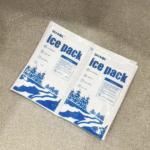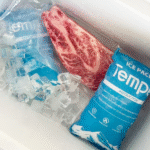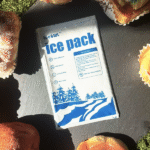Best Dry Ice Pack Sheet: How Do You Choose in 2025?
If you’re looking for the best dry ice pack sheet in 2025, this guide will help you make the right decision: dry ice sheets are a vital part of temperature-sensitive logistics, ensuring your products stay frozen throughout transit. In this article, we’ll explore how to choose, use, and optimize them effectively for your business.
-
Pick the right dry ice pack sheet for food, pharma, and DTC lanes (0–10 °C)
-
Size coolant fast with a lane-time calculator to avoid DIM weight
-
Meet safety rules for true dry ice (UN1845) and avoid delays
-
Compare sheets, gel packs, and PCMs to reduce waste and cost
What exactly is a “dry ice pack sheet” in 2025?
Bottom line: A dry ice pack sheet is a flexible cooling material designed to maintain sub-zero temperatures during transport. Choosing the best dry ice pack sheet means finding one that balances cooling efficiency, durability, and cost.
Key differences vs gel packs and PCMs
| Cooling Method | Working Range | Typical Duration | What changes your choice | What it means for you |
|---|---|---|---|---|
| Dry ice pack sheet (SAP) | ~0 °C | 12–48 h (with proper packout) | Insulation R-value, hydration, packing pattern | Lower cost, flexible wrap, quick to deploy |
| PCM bricks/tiles | −25 °C to +25 °C (various) | 24–96 h | Validation needs, capex, pre-conditioning time | Tight control for audits and stability |
| True dry ice (CO₂) | ≈ −78.5 °C | Highly variable (sublimation) | IATA UN1845 rules, venting, carrier policies | Ultralow temp; hazmat training required |
Practical tips and advice:
-
Food & meal-kit lanes: Sheets are ideal for 0–10 °C when you line sides and cap the top.
-
Clinical 2–8 °C: PCMs reduce variability and simplify validation record-keeping.
-
Deep-frozen: Use solid CO₂ only with proper labels and vented packaging.
Real-world case: A DTC seafood brand replaced bulk gel with sheet “wraps” and a top cap. Hold-time met a 36-hour lane, shipping weight dropped by 1.2 kg, and claims fell by half.
How do you evaluate the “best” sheet for your shipment?
Short answer: Score each candidate on five factors—thermal performance, leak resistance, handling safety, regulatory fit, and total landed cost—and run a lane test. A simple 6–8 hour bench profile (ambient 23 °C, payload 2–8 °C) predicts most 1‑ to 2‑day scenarios.
Thermal performance checklist
-
Hydration: 60–70× sheet mass in water is typical; drain excess to prevent sweating.
-
Freeze regimen: −18 to −25 °C for 24–48 hours; lay flat to freeze uniformly.
-
Pack density: Fill headspace; sheet cells should face payload surfaces.
-
Validation: Record core temp every 5 minutes with a logger to verify duration.
Leak and handling checklist
-
Use double-sealed or textile-reinforced cells to reduce punctures.
-
Bag sheets or use film liners to control condensation.
-
Train packers on scissors/box-cutter technique to avoid accidental nicks.
Safety and compliance in plain English
True dry ice is regulated as a Class 9 hazardous material (UN 1845). If you ship with solid CO₂, follow IATA PI 954, mark “Dry Ice” (or “Carbon Dioxide, solid”), the UN number, and the net mass in kilograms, and apply the Class 9 label. Ensure venting to avoid CO₂ buildup.
For water-based sheets (no CO₂), you avoid those hazmat labels, but you still need food contact documentation if touching edible goods, and good manufacturing and sanitation practices for pack rooms.
CO₂ exposure basics packers should know
-
CO₂ can displace oxygen; OSHA TWA is 5,000 ppm; IDLH 40,000 ppm.
-
Dry ice causes frostbite on contact; use insulated gloves and eye protection.
-
Never seal dry ice in airtight containers; pressure can build dangerously.
How to size your coolant in minutes
Start with your lane time plus a 20% buffer. Multiply by your shipper’s heat gain rate (W/°C) and the temperature delta. Convert the watt-hours to the mass of frozen water required; then map to sheets by total hydrated mass.
Packing pattern that just works
-
Pre-chill shipper and payload.
-
Line sides with 2–3 plies; place a full sheet on top.
-
Use dunnage to eliminate air gaps; close fast to reduce meltback.
2025 trends that affect your choice
-
Meal-kit and DTC growth demands lighter, cheaper coolants with reliable 0–10 °C control.
-
Pharma adds traceability and validation pressure, increasing interest in PCMs for narrow bands.
-
Carrier enforcement of UN1845 labels stays strict; training and checklists reduce delays.
Quick progress highlights
-
Reusable PCM tiles extend hold times and reduce waste in validated lanes.
-
Reinforced ice blankets cut punctures in dense kitted boxes.
-
Bench testing with affordable loggers guides right-sizing and saves freight.
Quick comparison table (performance and cost signals)
| Factor | Sheet‑forward packout | PCM‑forward packout | What it means for you |
|---|---|---|---|
| Hold‑time stability | Medium | High | PCMs smooth spikes; fewer excursions |
| Up‑front cost | Low | Medium–High | Sheets reduce capex; PCMs pay off in audits |
| Storage footprint | Low (dry, flat) | Medium (pre‑frozen) | Easier to scale seasonal volume |
| SOP complexity | Simple | Moderate (pre‑conditioning) | Less training vs. timed staging |
FAQ
Q1: Are “dry ice pack sheets” the same as dry ice?
A: No. They are water-based SAP ice blankets. True dry ice is solid CO₂ and regulated differently.
Q2: How long do sheets keep 2–8 °C?
A: In a medium EPS shipper, a full top sheet plus side plies often covers 24–48 hours, but validate your lane.
Q3: Can I use sheets with seafood?
A: Yes, if bagged appropriately. Keep direct food contact compliant and separate raw from ready-to-eat.
About Tempk
We design and validate cold-chain packaging for food, life sciences, and DTC brands. Our kits include hydration guides, pre-conditioning SOPs, and labeling checklists. We help you ship colder, safer, and cheaper.
CTA: Talk to a Tempk packaging specialist to right-size your coolant for your top three lanes.
























